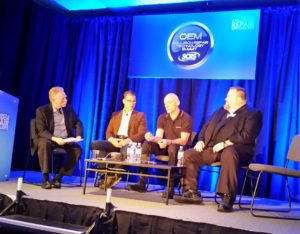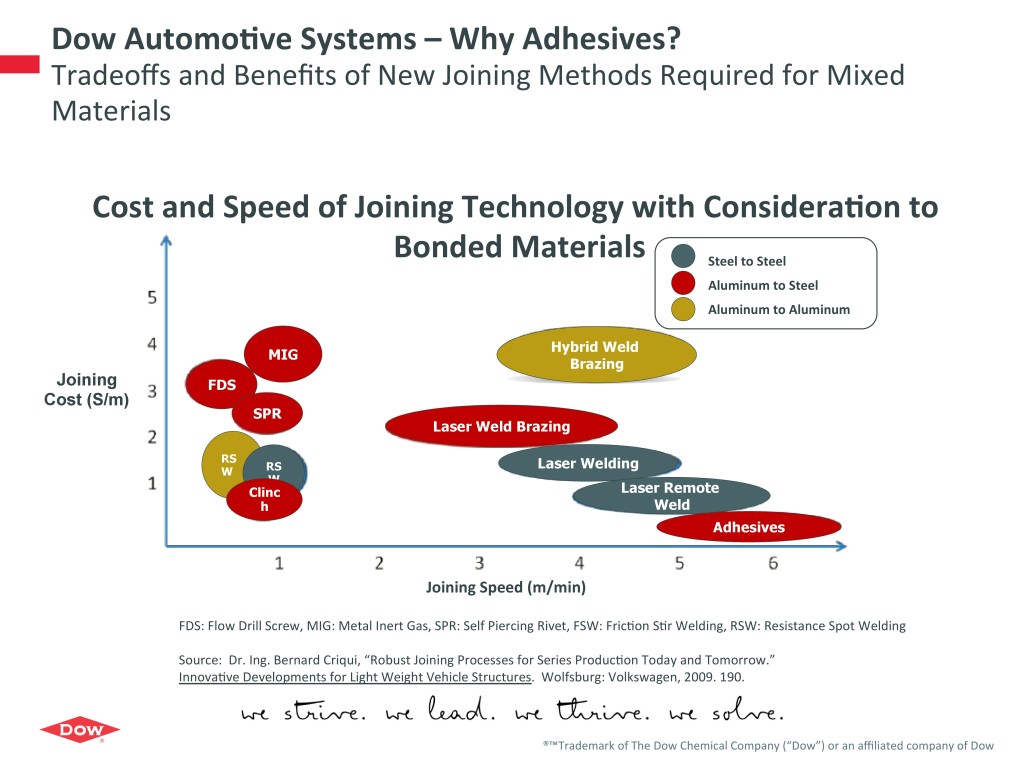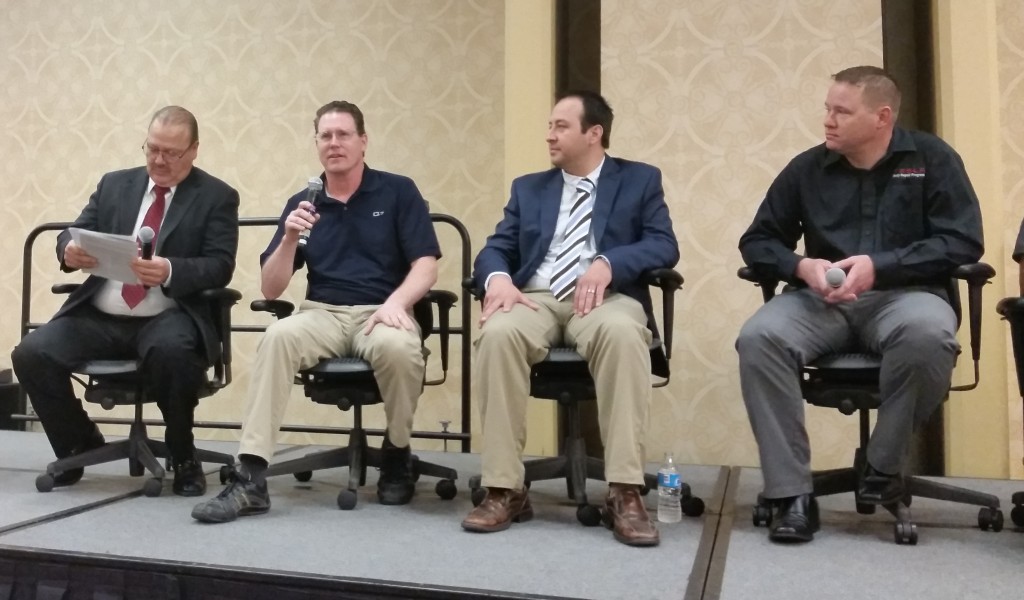
SCRS announces SEMA OEM Summit topics: Scans, composites, adhesives, OEM trainers
By onAnnouncements | Associations | Education | Market Trends | Repair Operations | Technology
Besides the chance to learn about what diagnostic scanning and equipment, composite body materials and structural adhesives could mean for your shop, the 2016 OEM Collision Repair Technology Summit at SEMA will offer another chance to ask OEMs about getting trained on all of it.
SCRS announced the lineup for its three headliner Repairer Driven Education courses on Wednesday, urging interested shop staff and owners to register early for the Nov. 3 OEM Summit and the entire Nov. 1-4 RDE series.
“The (OEM Summit) is designed to put SEMA Show attendees in a room with innovators in automotive structural design and technology, providing one of the most unique networking and learning opportunities available to the collision repair industry,” SCRS wrote in a news release. “… The future of our collision repair industry is highly skilled professionals, working on highly sophisticated automobiles that require the industry to embrace the necessary investments in training and equipment; but also relies on informed business owners who understand how to define for themselves what a sustainable and successful business model to support that investment looks like.”
Repairer Driven Education features more than 30 educational sessions held in conjunction with the Nov. 1-4 SEMA Show in Las Vegas. (The Collision Industry Conference also runs Nov. 1-2 that week.)
Individual RDE and OEM Summit sessions are $75, but for the Society of Collision Repair Specialists’ $375 early bird price, you get access to the entire week, the summit, and the SCRS Sky Villa afterparty Nov. 3 at the Westgate Las Vegas Resort & Casino. Register for the full-series pass here; you’ll also receive a discount on passes to SEMA.
Register and see descriptions for all the SCRS courses here, or visit www.scrs.com/RDE. Learn more about SCRS with www.scrs.com, 1-877-841-0660 or info@scrs.com.
Here’s a rundown of the sessions and a little background on the topics and OEMs announced so far.
9:30-11:30 a.m.: “Restoring Vehicle Functionality through Electronic Technology and Diagnostics”
John Ells of Ellis & Associates — a former Ford Developer Program head and global technologist — will moderate two panels related to the collision repair responsibility for scanning and calibrating vehicles. Last year, he offered insights at the OEM Summit as a guest on a similar panel. See coverage here, here and here.
“As vehicle technology and function advance to meet consumer expectations for safety, convenience and luxury options, and the role of diagnosing accident and repair related failures in the systems becomes more complex,” SCRS wrote in a news release Wednesday. “Restoring the functions, calibrating sensors and documenting the restoration of the technological elements in the vehicle become a pivotal part of the repair process.”
The first forum will feature experts from automakers — including FCA, Nissan, Toyota and Honda, all of which shook up the collision repair world this year with position statements on pre- and post-repair scanning.
“The conversation will cover the technological developments that are precipitating the need for a more systematic approach to identifying, documenting and correcting Diagnostic Trouble Codes,” SCRS wrote.
The second group will include diagnostic equipment and service providers offering collision technicians either the tools to scan vehicles or the service of handling the diagnostics outright.
“The conversation will identify the mechanisms available to the collision repair community, and address unique challenges associated with each,” SCRS wrote. “Repairers in attendance will leave with a better understanding of options available to their business.”
12:30-2:30 p.m.: “Advanced Vehicle Materials, Construction and Repair Considerations”
The first half of this segment will help collision repairers prepare for carbon-fiber and other composites should the materials find widespread adoption. Based on some existing mainstream models — the 2016 Honda Civic and Ridgeline both use composites — and expert predictions, that’s a real consideration.
GM body structures advanced composites engineering group manager Mark Voss will host what SCRS called an “exploratory discussion” on the materials, which often feature some sort of fibers encased in a resin, and mass-market applications. As SCRS’ bio indicates, Voss is incredibly qualified to run the talk with repairers; he’s responsible for all GM’s structural advanced composites and has developed carbon-fiber and other composites.
“The presentation will explore current and future use cases of advanced composite materials, the process and advantages the material presents to automakers, how it is and can be used, and repair considerations,” SCRS wrote.
The second half of the segment will address how to join that carbon fiber and other mixed-material body designs with adhesives. Dow Automotive aftermarket business marketing manager Frank V. Billotto will host the segment, and based on Megatrends presentations by Dow’s Ana Wagner and Selamawit Belli, it should be filled with solid insight for repairers.
“Adhesive bonding is an enabler for light weighting and mixed substrate construction, allowing joining where traditional methods are not feasible, and takes advantage of structural bonding benefits such as improved load bearing capability, enhanced NVH performance, ride and handling, and safety,” SCRS wrote. “This presentation will focus on why and how adhesives are being used, and discuss the implications for collision repair.”

3-5 p.m.: “Meet the Trainer”
Following the tremendous success and response to the April SCRS Repairer Roundtable, which featured trainers from Audi, Jaguar Land Rover/I-CAR, Tesla and Toyota, SCRS decided to devote the third and final summit segment to OEM trainers.
“In-person trainers have a unique insight in the existing challenges our technical staff have as they enter the training room doors, and the skills they acquire after they leave,” SCRS wrote. “The conversation will address proficiency expectations, preparatory steps collision repair facilities can take in order to achieve better results with technicians … In addition to exploring the technical staff training and testing processes, the discussion will also look at training targeted to raise awareness beyond the repair shop floor.”
Staff success during OEM training — as well as their retention of the lessons within that training — can have a major impact not only on day-to-day repairs but whether the facility can achieve OEM and other certifications.

More information:
“SCRS Releases Details of OEM Collision Repair Technology Summit Sessions”
Society of Collision Repair Specialists, Aug. 17, 2016
“Early Registration for RDE at SEMA is Open – Get Registered Today!”
Society of Collision Repair Specialists, Aug. 3, 2016
SCRS SEMA Repairer Driven Education registration
SCRS via SEMA Show website
Images:
From left, moderator Steve Marks, I-CAR industry technical support manager; Advanced Collision Repair Solutions President Oliver Woelfel; Wielander+Schill chief engineer and director Klaus Reitzig; and Jason Scharton, 3M automotive OEM business development manager, participate in the SCRS OEM Technology Summit. (John Huetter/Repairer Driven News)
Structural adhesives can join aluminum to steel cheaper and faster — 50-100 percent faster — than any other method out there, according to 2009 Volkswagen data Dow Automotive presented March 17, 2016. (Volkswagen data presented by Dow Automotive)
2016 SCRS Repairer Roundtable panelists, from left, Toyota collision training administrator Joe DiDonato; Audi collision repair training instructor and curriculum designer Shawn Hart; Eric Mendoza, Toyota repair/refinish training assistant manager; and Tesla body repair program technical manager Kelly Logan. (John Huetter/Repairer Driven News)

